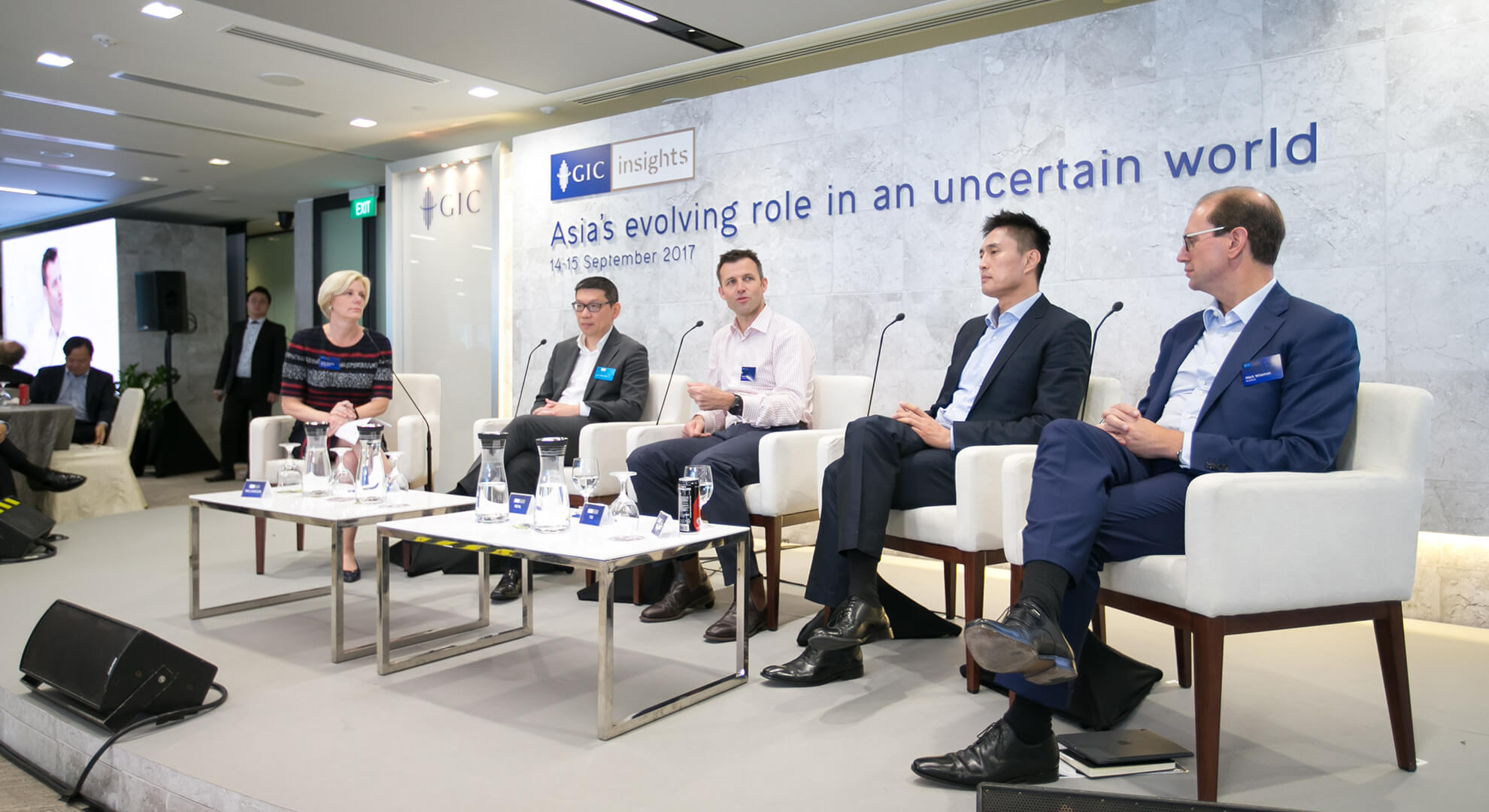This article presents takeaways from a panel at GIC Insights 2017 with Lim Chow Kiat, CEO of GIC; David Neal, CEO of Future Fund; Yu (Ben) Meng, Deputy CIO of SAFE Investment Center; and Mark Wiseman, Global Head of Active Equities and Chairman of Alternatives at BlackRock. It was moderated by Sarah Williamson, CEO of FCLTGlobal. GIC Insights is our annual flagship event that gathers a select group of prominent business leaders to deliberate over long-term issues pertinent to the international business and investment community.
Why is long-term investment important?
Long-term investing is important because it serves the interests of the ultimate owners of capital – individual savers. These individuals have long-term goals such as achieving financial security, philanthropic goals or providing education.
A long-term approach allows investors to capture long-term trends, harvest the illiquidity premium and compound returns for the long-term. Furthermore, short-termism does come at a cost. A recent McKinsey study showed that short-termism cost the U.S. economy USD$1 trillion in Gross Domestic Product (GDP) growth. It also cost the country up to five million jobs in the last decade. Thus, short-termism does not just hurt savers in their long-term wealth accumulation, it can also jeopardise societal growth and prosperity.
One key observation is the large gap between understanding and practice. While many know why long-term investing is important, short-term decision making remains prevalent. This is largely due to companies becoming trapped by current market conditions, excessive public scrutiny and the need to maintain short-term reserves.
How should companies avoid short-termism?
Large corporations tend to act with a short-term perspective as a result of their need for success-assessment metrics. With their long chain of principal-agent relationships, these metrics are used to assess whether the next person in the chain is performing well. However, these metrics incentivize short-term behaviour.
Companies should instead, create a corporate culture which values the long-term perspective, and de-emphasises such short-term performance metrics. Doing so will help them stave off the volatility and emotional pressures of the financial market. This can be done by distinguishing between process and outcomes, as well as by paying attention to the design of incentives, mandates, evaluation criteria and internal communications.
Furthermore, organisations should actively engage with their clients and stakeholders to ensure they understand the changes of the investment environment. It is crucial for everyone to have similar levels of understanding, particularly in an unpredictable geopolitical environment.
How should companies manage risk in the long-term?
Investors must remain exposed to the market to achieve long-term return objectives. This does come with some inherent risks, but these can be guarded against by diversifying asset portfolios. In an environment where traditional risk premiums have shrunk, investors should diversify to keep their risk lower, while simultaneously working hard to find new opportunities.
Investors should also take a dynamic approach to risk-reward, ensuring that each risk is taken in context of the returns.
There are also operational strategies that can be used to manage risk. For example, investors can build structures that interpret short-term signals well. Further, they can invest more heavily in technology to stay ahead in trading analytics. In addition, they should use economies of scale, and exploit competitive advantages – no matter how small.
What are trends that long-term investors can capitalise on?
There are three main long-term trends to highlight.
First, the digitalisation of the economy. This will have a particularly large impact when Artificial Intelligence (AI) becomes more ubiquitous. An economy running on e-commerce, online payments and other similar phenomena, will require greater data-gathering capacities. As such, data analytics and data centers become increasingly attractive investments. Cybersecurity solutions, among others, will also become essential in supporting the digital economy.
Thus, companies must fully embrace technology as a whole organisation. This includes actively sourcing out new technologies, as well as understanding the implications of technological disruption on incumbents.
Second, a changing demographic. It is crucial for investors to respond to issues of ageing, as well as differences in the lifestyle and consumption preferences of baby boomers, millennials and Generation Z. For example, the ageing baby boomer population will likely lead to an increased demand for healthcare related services. Alternatively, the rapidly changing technology cycle and lack of brand loyalty from younger generations will shorten corporate lifespans. As such, companies will need to reinvent themselves to survive.
Third, climate change. Though it is crucial to assessing risk, long-term investors have not paid enough attention to this issue. Investors and companies need to understand how climate change will impact them in the future. At GIC, we believe that companies with good sustainability practices are likely to perform well financially in the long term. Our approach integrates sustainability considerations into our investment and corporate processes.







